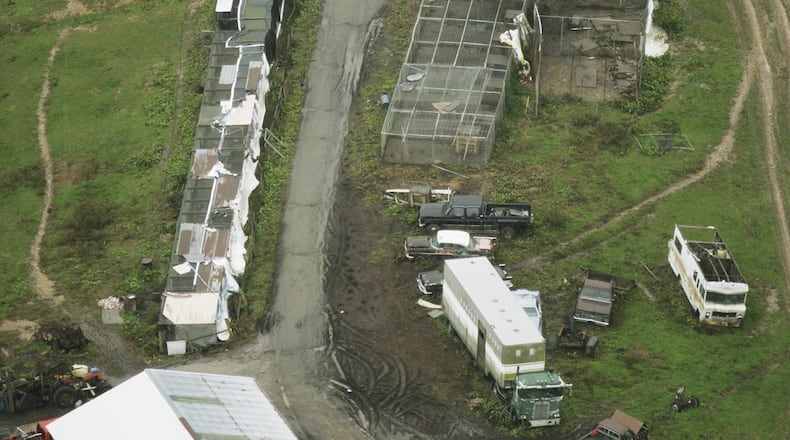Gary Brock’s theory: That Thompson’s death was a covered-up murder. His evidence? Suicide wasn’t part of Thompson’s nature.
Thompson had only recently been released from a federal penitentiary, where he served a year on gun charges. If it was suicide, said Brock, it could easily have been avoided.
Thompson, he said, returned to Zanesville to find a sizable delinquent property tax bill, his wife had moved out and he was confined to the farm by an electronic monitor. He wasn’t allowed to visit the people who cared about him.
“He got out and he just went into isolation really quick. He hadn’t been out but, I think, two weeks. In that period of time, not that many of us saw him,” Brock said. “If he had been able to maybe function outside of (the farm) to where he would have had contact with his people that he knew and trusted, it might not have happened. Or at least I might have had an idea that something bad was going on in his thoughts. Once again, it never was in his mode: suicide.”
Brock described Thompson as “one of the smartest, most athletic guys,” but also one who was “always on the edge. There was never a dull moment when you saw Terry…I still miss him.”
As another anniversary of the incident approaches, Muskingum County Sheriff Matt Lutz recalled the terrifying afternoon of Oct. 18, 2011, when reports of wild animals running loose began pouring into his office.
Lutz didn’t know how many animals Thompson kept on the property or how much of a head start they had, but he knew he only had about 90 minutes of daylight. That’s when he gave the order to his deputies: Put down any animal off the property or close to leaving the property.
“There is no way we could have those types of animals loose in our neighborhoods,” Lutz said.
About 10 deputies from the SWAT team rode in the back of two pickup trucks, while another 10 patrolled the perimeter. Among the 49 animals killed that day: 18 tigers, 17 lions, eight bears, three mountain lions, one baboon and two wolves.
The Ohio General Assembly responded with one of the nation’s toughest laws on private ownership of exotic animals, though the crackdown hasn’t been cheap.
The Ohio Department of Agriculture spent more than $3 million to build a 20,000-square-foot temporary animal holding facility in Reynoldsburg east of Columbus, and has since spent more than $3.6 million to house, feed, transport and care for the animals housed there.
Since it opened in early 2013, the Reynoldsburg facility has held 207 confiscated or surrendered wild animals, including 107 American alligators, 39 snakes, 18 black bears, 16 tigers, seven brown bears, and five cougars.
“It’s very impressive what they’ve accomplished in Ohio,” said Debbie Leahy of the Humane Society of the United States. “I don’t think we’ve seen a crackdown like that anywhere else in the country.”
But Mona Kerby of Butler County called the regulations ridiculous and costly to exotic animal owners. Kerby has owned an eight-pound monkey, Bella, for 13 years. Under the new law, insurance costs her $1,350 a year, she must submit to annual home inspections and a criminal background check and mandated visits to the veterinarian, she said.
“I do think there should be restrictions. but they should be reasonable,” Kerby said.
Other stories from this reporter you won’t want to miss:
About the Author

